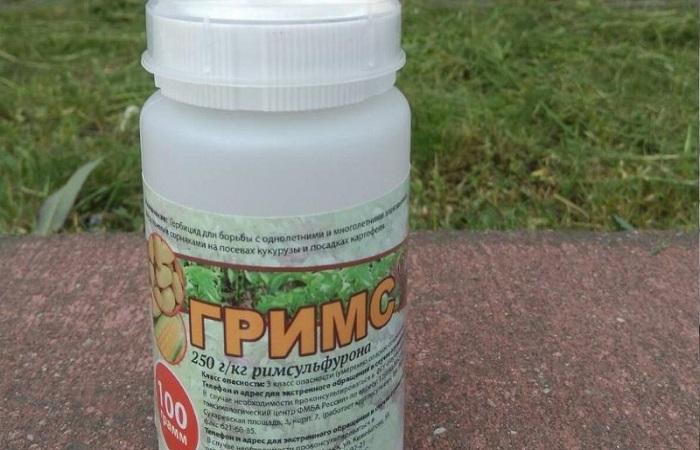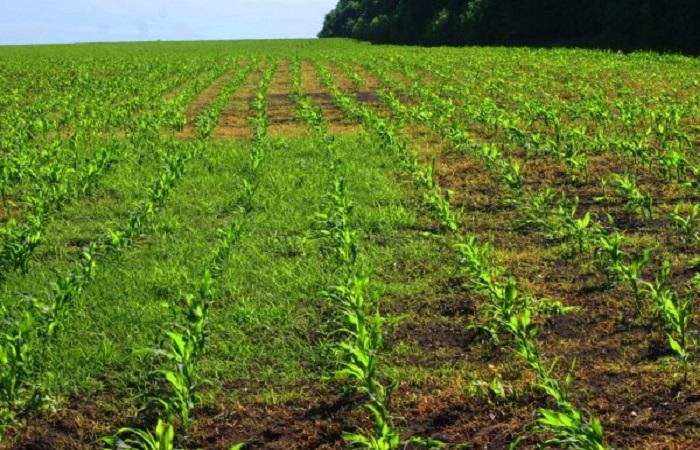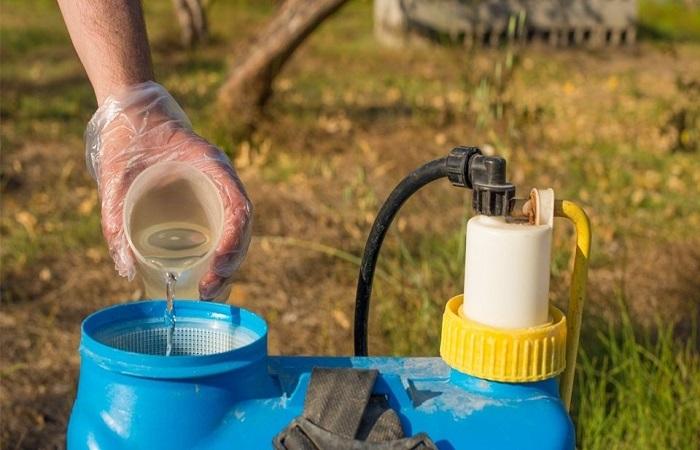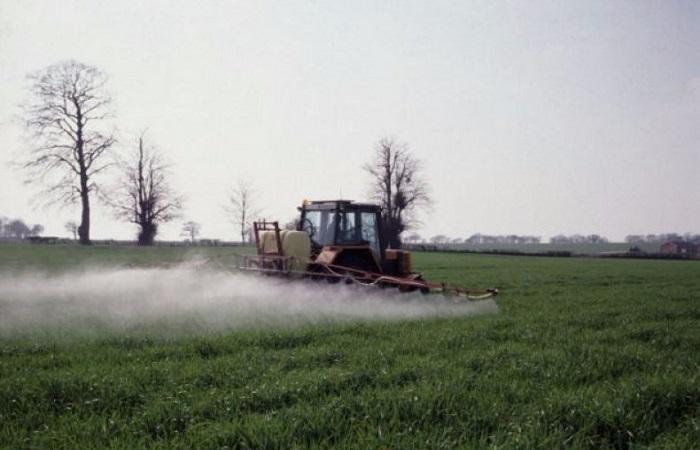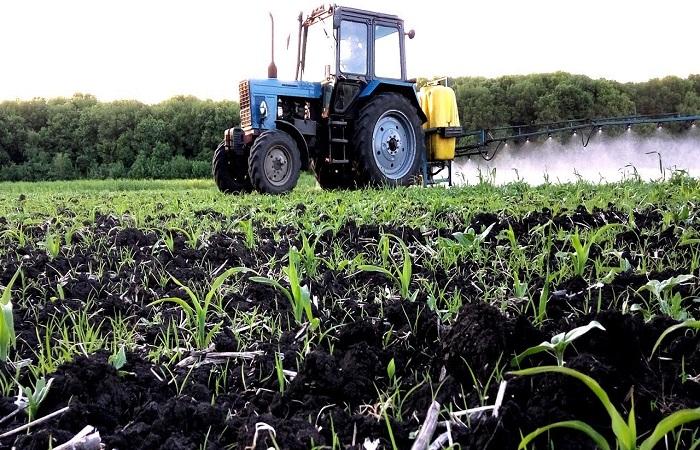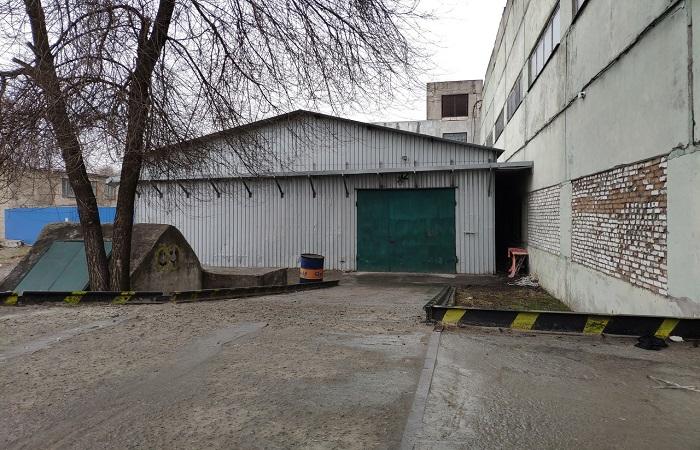Herbicide "Grims" is a one-component product that allows you to cope with annual and perennial cereal grasses, as well as some dicotyledonous weeds. It can be used for planting corn and potatoes. In order for the drug to give the desired effect, you must strictly follow the instructions for its use. Compliance with safety rules is of no small importance.
Active substance and dosage form
The herbicide is produced in the form of granules that dissolve in water.The substance does not have a pronounced aroma. The composition is sold in containers of 100 grams. The active ingredient is rimsulfuron. In 1 kilogram its quantity is 250 grams.
How it works and scope of use
"Grims" is predominantly absorbed by the foliage of weeds and quickly moves to the merisystemic tissues of roots and shoots. The substance blocks acetylcholinesterase, a special enzyme involved in the production of amino acids. This stops the division of weed cells, causes their growth to stop and leads to death.
The main advantages of the product include the following:
- high efficiency against a large number of cereals and dicotyledonous weeds;
- long period of use - at the stage of appearance of 1-7 leaves;
- no restrictions on crop rotation;
- Possibility of use in various security programs;
- economical consumption - 40-50 grams of substance are required per 1 hectare;
- ease of use - the composition is odorless and has a convenient preparative form;
- high efficiency against creeping wheatgrass;
- Possibility of use in tank mixtures.
Method of application of herbicide
Grims is primarily used with the adjuvant ETD-90. This substance helps improve the penetration of the active substance into the weed. The optimal content of ETD-90 in the working solution is 0.1%. For 100 liters of working solution, you need to use 100 milliliters of the substance.
In drought conditions, the dose of working fluid should be increased to 300 liters per 1 hectare. At the same time, the amount of ETD-90 also needs to be increased to 300 milliliters.
"Grims" has a systemic effect on weeds, but does not have significant activity in the soil. As a result, it is possible to control the growth of only the grass that has sprouted when the herbicide is applied.
The most vulnerable phases of weed development include the following:
- perennial root shoots - at the stage of formation of a rosette of leaves up to 10-15 centimeters in diameter;
- annual dicotyledons - from the moment of cotyledon formation until the appearance of 4 true leaves;
- field bindweed - when lashes 10-15 centimeters long appear.
Like most analogues from the sulfonylurea category, “Grims” begins to work already at temperatures of +5 degrees. However, the optimal option is considered to be a range of +8-24 degrees. The absence of precipitation for 2 hours from the moment of treatment is also important.
When dealing with overgrown weeds, it is important to use the maximum dosage. Since “Grims” allows predominantly controlling cereal weeds, in case of mixed weeds it must be combined with the anti-dicot herbicides “Lart” and “Asterix”.
It is recommended to spray the plantings at the stage of appearance of 2-6 leaves of corn and 15-20 centimeters of potato sprouts or immediately after hilling. For 1 hectare it is required to use 50 grams of the substance. In the absence of overgrown weeds or perennial grass, the dosage can be reduced to 40 grams.
It is recommended to carry out the second treatment when a new wave of weeds appears. At this stage, it is worth using 20 grams of the drug per 1 hectare. At the stage of the second treatment, it is worth adhering to restrictions on the height of the potatoes. This figure should not be more than 20 centimeters.
The norm and features of the use of the substance are indicated in the table:
| Substance use rate | Culture | Weeds | Processing Features | Waiting period (number of treatments) |
| 0,04 | Corn for grain | Annual cereals and dicotyledonous weeds
|
It is necessary to spray the plantings at the stage of 2-6 leaves of the crop and in the early stages of weed growth. The consumption of working fluid is 200-300 liters per 1 hectare. | 60 (1) |
| 0,05 | Corn for grain | Grass and dicotyledonous weeds – perennial and annual
|
Plantings need to be sprayed at the 2-6 leaf stage. In this case, the height of cereal weeds should be 10-15 centimeters. The drug can also be used in the rosette phase of thistle. The consumption of working fluid is 200-300 liters per 1 hectare. | 60 (1) |
| 0,05 | Potato | Perennial and annual cereals and a number of dicotyledonous weeds | Plantings need to be sprayed after hilling, in the early stages of development of annual weeds and when wheatgrass is 10-15 centimeters high. For 1 hectare it is necessary to take 200-300 liters of working solution. | 60 (1) |
Precautions when working with Grims
To ensure safe use of a substance, it is important to strictly adhere to safety rules. It is recommended to use personal protective equipment. Compliance with personal hygiene rules is of great importance.
What is compatible with?
"Grims" is prohibited from combining with organophosphorus insecticides. It is also important to maintain a two-week interval before and after using such products. The herbicide is combined with other pesticides. The exceptions are substances that are highly alkaline or acidic. However, in each case it is worth checking for compatibility.
How to store it correctly
It is recommended to keep the drug in warehouses that are specifically designed for pesticides. This must be done in a sealed container without factory damage. The shelf life of the substance is 3 years from the date of manufacture. It is important to adhere to storage conditions.
What can be replaced
Effective analogues of the product include:
- "Altis";
- "Arpad";
- "Escudo."
Herbicide "Grims" is an effective product that helps control different types of weeds. It is important to strictly follow the instructions.

